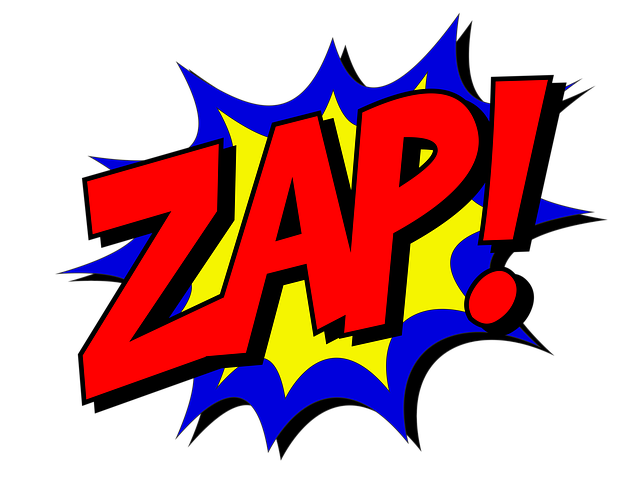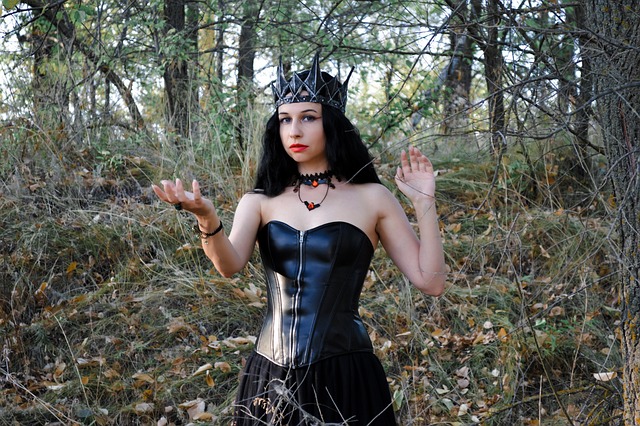Have you ever found yourself captivated by a villainous character, their twisted motivations and cunning schemes leaving you on the edge of your seat? Villains play an integral role in storytelling, often adding depth and complexity to the narrative. Whether you’re a writer seeking inspiration or simply a fan of enthralling tales, this article will take you on a fascinating journey through a collection of villain writing prompts. Delve into the enigmatic minds of evildoers, explore their sinister plots, and unlock the secrets of crafting compelling antagonistic stories. Get ready to unlock your creativity and immerse yourself in the dark, intriguing world of villainy!
Contents
- 1. Unleashing Creativity: Captivating Villain Writing Prompts for Antagonistic Stories
- 2. Crafting the Perfect Antagonist: Dive into the Art of Villainous Character Development
- 3. Exploring Motivations: Discover Unique Backstories for Your Villains
- 4. Complexity in Conflict: Uncover Strategies for Adding Depth to Antagonistic Narratives
- 5. Embracing Moral Ambiguity: Writing Villains with Nuanced Morality and Conflicting Values
- 6. Psychological Warfare: Dive into the Minds of Your Villains with Intriguing Writing Prompts
- 7. From Foe to Redemption: Exploring Arcs for Complex and Evolving Antagonistic Characters
- 8. Raising the Stakes: Unveiling Powerful Tips to Create Tension and Enticing Confrontations in Antagonistic Stories
- Frequently Asked Questions
- In Summary
1. Unleashing Creativity: Captivating Villain Writing Prompts for Antagonistic Stories
Welcome to a world where the lines between good and evil blur, creating powerful and captivating stories filled with intriguing villains. In this section, we present an array of writing prompts that will unleash your creativity and inspire you to dive deep into the minds of the antagonists that make our stories unforgettable.
1. Twisted Origins: Explore the twisted origins of a villain. Dive into their past, uncovering the events and circumstances that shaped them into the formidable antagonist they are today. What traumatic experiences or moral dilemmas did they face? How did these events mold their beliefs and motivations?
2. Motivational Monologues: Allow your villain to take center stage and deliver a chilling monologue that reveals their innermost desires and motives. What drives them to commit heinous acts? Is it a thirst for power, revenge, or something even more sinister? Craft a speech that leaves readers both captivated and disturbed, providing insights into the complex psyche of your antagonist.
2. Crafting the Perfect Antagonist: Dive into the Art of Villainous Character Development
When it comes to crafting a compelling story, one of the key elements is undoubtedly the antagonist. A well-developed villain can take a story from ordinary to extraordinary, adding tension, conflict, and depth to the narrative. In this section, we will delve into the art of villainous character development, exploring the techniques and nuances that can help you create the perfect antagonist.
Understanding the motivations: A villain without a compelling motive often falls flat and becomes forgettable. Dive deep into your antagonist’s past and present, understanding what drives their actions and fuels their desires. Are they seeking revenge? Longing for power? Or driven by a twisted sense of justice? By understanding their motivations, you can create a villain with depth and complexity.
Creating a backstory: Every villain has a story to tell, and by crafting a detailed backstory, you can bring their character to life. Consider their upbringing, experiences, and pivotal moments that shaped the person they became. This backstory will provide you with valuable insights into the choices they make throughout the story, ensuring that their actions remain consistent and believable.
- Flaws and vulnerabilities: To make your antagonist truly compelling, it is crucial to give them flaws and vulnerabilities. These imperfections humanize them, making them relatable and three-dimensional. Whether it’s a fear, a moral dilemma, or a personal weakness, these vulnerabilities will add depth to their character and create opportunities for growth.
- Opposing qualities: A great antagonist is often the polar opposite of the protagonist. Explore the dichotomy between these two characters, contrasting their personalities, beliefs, and values. By highlighting their opposing qualities, you can create a dynamic and engaging relationship that drives the story forward.
- Evoking emotions: A well-crafted antagonist should evoke a range of emotions in your readers. Whether it’s fear, anger, or even sympathy, tap into the power of emotional connections to make your villain memorable. By understanding how your readers will respond, you can tailor your antagonist’s actions and dialogue to invoke the desired emotional response.
By diving into the art of villainous character development, you can ensure that your antagonist becomes more than just a one-dimensional “bad guy.” With a deep understanding of their motivations, a well-crafted backstory, and attention to flaws and vulnerabilities, you can create a villain that captivates your readers and adds richness to your story.
3. Exploring Motivations: Discover Unique Backstories for Your Villains
Uncovering the Hidden Depths of Your Villains for an Engaging Narrative
Every great story needs a compelling villain, someone whose motivations and actions create tension and drive the plot forward. However, creating a one-dimensional antagonist can lead to a predictable and lackluster storyline. To truly captivate your audience, it’s crucial to explore the unique backstories of your villains. By delving into their motivations, you can create multifaceted characters that surprise and engage your readers.
In order to uncover the hidden depths of your villains, consider the following tips:
- 1. Explore their past: Dig deep into your villain’s history. What experiences shaped their worldview? Understanding their upbringing and formative events can provide insight into their current behavior.
- 2. Identify their desires: What is it that your villain wants? Is it power, revenge, or something else entirely? By identifying their desires, you can tap into their driving force and create believable motivations.
- 3. Establish personal connections: Create connections between your villain and other characters in your story. Maybe they were once friends or have a shared history. This can add complexity to their motivations and create opportunities for surprising plot twists.
By taking the time to explore the motivations of your villains, you can craft unique backstories that will elevate your narrative and keep readers hooked from beginning to end. So, dive deep and uncover the depths of your antagonists for an unforgettable storytelling experience.
4. Complexity in Conflict: Uncover Strategies for Adding Depth to Antagonistic Narratives
In the world of storytelling, conflicts have always played a vital role in driving narratives forward. However, for a story to truly captivate its audience, it requires more than black-and-white antagonist-versus-protagonist scenarios. By embracing complexity in conflict, writers can breathe life into their narratives, adding layers of depth and nuance that keep readers engaged. So, how can you uncover strategies for transforming your antagonistic narratives into captivating works of art? Here are a few tips to set you on the right path:
- Create multidimensional characters: Gone are the days of one-dimensional villains or heroes. Instead, develop complex characters who embody conflicting emotions, motivations, and desires. By exploring their internal struggles and contradictions, you can introduce shades of gray that challenge readers’ preconceived notions.
- Foster empathy: Encourage readers to empathize with both sides of the conflict. This can be achieved by providing backstory and context for characters, highlighting their shared vulnerabilities, or challenging societal biases. By humanizing the antagonist, readers can better appreciate the complexity of the conflict.
5. Embracing Moral Ambiguity: Writing Villains with Nuanced Morality and Conflicting Values
When it comes to creating memorable villains, one of the most effective techniques is to infuse them with nuanced morality and conflicting values that challenge the readers’ perceptions of right and wrong. Gone are the days of one-dimensional evil antagonists; today’s audiences crave complex characters with shades of grey, and exploring their inner conflicts can elevate your storytelling to new heights.
In order to embrace moral ambiguity in your villains, consider the following strategies:
- Develop a compelling backstory: Give your villain a rich history that justifies their actions. Delve into their past experiences, traumas, or beliefs that may have shaped their morals. This provides depth and allows readers to empathize with their choices, no matter how morally questionable.
- Show conflicting values: Give your villain a set of values that do not align with traditional notions of good or evil. Explore the juxtaposition of their conflicting beliefs and actions, highlighting the internal struggle. This will make them more relatable and help readers understand their motivations.
- Provide moral dilemmas: Test your villain’s moral compass by putting them in situations that force them to choose between competing values. This can create internal conflicts that add layers to their character and challenge the reader’s own sense of morality.
By embracing moral ambiguity and crafting villains with nuanced morality and conflicting values, you can elicit a deeper emotional response from your readers. This approach allows for more thought-provoking storytelling, blurring the line between hero and villain, and immersing audiences in a morally complex world.
6. Psychological Warfare: Dive into the Minds of Your Villains with Intriguing Writing Prompts
Understanding the psychology of your villains can add depth and complexity to your story. Dive into their minds and explore their motivations with these intriguing writing prompts:
- Create a backstory: Develop a detailed backstory for your villain, focusing on their childhood, experiences, and pivotal events that shaped their twisted mindset.
- Uncover their fears and insecurities: Explore the vulnerabilities of your villain. What are their deepest fears? What insecurities drive them to commit villainous acts?
- Examine their conflicting emotions: No villain is one-dimensional. Show the internal struggle your character faces by delving into the conflicting emotions that arise from their actions.
By incorporating psychological warfare in your writing, you can create compelling villains that are more than just stereotypical evildoers. These prompts will help you craft complex characters that both intrigue and unsettle your readers.
Remember, understanding the minds of your villains allows you to manipulate emotions, create suspense, and build gripping plot twists. Let your imagination run wild, explore the darkest corners of your characters’ psyches, and watch as your story takes on a whole new level of intrigue!
7. From Foe to Redemption: Exploring Arcs for Complex and Evolving Antagonistic Characters
In storytelling, it is often the protagonist who takes the spotlight, capturing our hearts and guiding us through their journey of growth and transformation. However, the antagonistic characters, those who stand in the way of our heroes, can also undergo incredible arcs that challenge our perceptions and offer valuable insights into the human experience. This post delves into the art of crafting complex and evolving arcs for antagonist characters, exploring how these individuals can transcend their role as mere obstacles and become catalysts for redemption.
One of the most captivating elements of an antagonist’s arc is the potential for redemption. By gradually revealing their motivations, vulnerabilities, and past traumas, writers can imbue these characters with a sense of humanity and empathy. Through their journey, we witness their development from a one-dimensional foe that we love to hate, into layered individuals who grapple with their own internal conflicts and ultimately seek redemption. By subverting expectations, creators allow these characters to challenge stereotypes and offer valuable lessons about the power of growth and transformation.
- Breaking down stereotypes: By infusing complexity into antagonistic characters, writers have the opportunity to shatter stereotypes and challenge readers’ assumptions. This allows for a more nuanced exploration of human nature and the motivations that drive individuals, revealing that nobody is purely good or evil.
- Exploring empathy: A well-crafted antagonist’s arc can elicit empathy from readers, forcing them to question the boundaries between right and wrong. When we understand the antagonist on a deeper level, we are prompted to reflect on the complex moral choices we face in our own lives.
- Mirroring personal growth: Just like the hero, the antagonist’s journey can mirror the struggles and obstacles faced by readers. As we witness the antagonist overcoming their own flaws and transforming into a more evolved version of themselves, we are encouraged to reflect on our own capacity for redemption and personal growth.
In conclusion, crafting intricate and evolving arcs for antagonistic characters not only adds depth to your storytelling but also offers readers valuable insights into the complexity of the human experience. By challenging stereotypes, exploring empathy, and mirroring personal growth, these characters can transform from mere foes into catalysts for redemption, compelling us to question our own perceptions of right and wrong.
8. Raising the Stakes: Unveiling Powerful Tips to Create Tension and Enticing Confrontations in Antagonistic Stories
In order to captivate readers and keep them on the edge of their seats, it is crucial to master the art of raising the stakes in your antagonist-driven stories. By increasing the pressure and creating tension, you can evoke powerful emotions and intensify the confrontations between your characters. Here are some expert tips to help you craft gripping and enticing narratives:
- Develop Complex Antagonists: A compelling antagonist is essential for driving the story forward and engaging readers. Take the time to create well-rounded and multi-dimensional antagonists, imbued with their motivations, flaws, and desires. By giving them depth and complexity, you will elevate the stakes, making the conflicts more enthralling.
- Establish Clear Objectives: Clearly define the goals and ambitions of both your protagonist and antagonist. Their desires should be mutually exclusive, creating a direct clash between their interests. This clash will intensify and sustain tension throughout the narrative, pushing the story to its limits.
- Add Unexpected Plot Twists: Surprise your readers by incorporating unexpected plot twists and turns. These unexpected developments can shatter the perceived balance of power, forcing your characters to confront new challenges. Unforeseen events will raise the stakes even higher, creating a sense of unpredictability that will hold your readers’ attention.
With these enticing tips, you can unlock the full potential of your antagonist-driven stories. Never underestimate the power of tension and confrontation – they are the building blocks of memorable narratives that will leave readers breathless.
Frequently Asked Questions
Q: What are villain writing prompts?
A: Villain writing prompts are thought-provoking prompts designed to inspire writers to explore stories from the perspective of the antagonist or villain character. These prompts encourage writers to delve into the minds of the “bad guys” and bring their motivations, backgrounds, and actions to life in a compelling way.
Q: Why should writers consider exploring villainous characters?
A: Exploring villainous characters can challenge writers to think outside the box and create complex, multi-dimensional characters. It allows them to explore the motivations and psychological intricacies of individuals who might not conform to societal norms. By delving deeper into the dark side, writers can craft engaging narratives that captivate readers and offer fresh perspectives.
Q: How can villain writing prompts enhance storytelling skills?
A: Villain writing prompts can enhance storytelling skills by encouraging writers to explore new narrative avenues. By focusing on villains, writers can push traditional boundaries and experiment with unconventional story structures. This can help develop their ability to create believable conflicts, build tension, and create unforgettable antagonists that readers will remember.
Q: Are villain writing prompts suitable for all genres?
A: Absolutely! Villain writing prompts are versatile and can be used across various genres, including fantasy, science fiction, crime, romance, horror, and even thrillers. The exploration of villainous characters can add depth and nuance to any genre, providing a fresh perspective that can surprise and captivate readers.
Q: How can villain writing prompts help writers overcome writer’s block?
A: Villain writing prompts provide a jumpstart for creative thinking, offering writers a fresh approach to storytelling. They can help overcome writer’s block by breaking through mental barriers and providing new directions for a stagnant plot. These prompts challenge writers to think differently and explore uncharted territory, igniting their imagination and getting the creative juices flowing once again.
Q: Can villain writing prompts be used for character development?
A: Absolutely! Villain writing prompts can greatly aid in character development. By focusing on antagonistic characters, writers have the opportunity to unravel their past, explore the events that shaped them, and delve into their motivations. Understanding what makes a villain tick allows writers to develop more nuanced and compelling characters, adding depth to their stories.
Q: Can villain writing prompts lead to thought-provoking narratives?
A: Yes, villain writing prompts have the potential to lead to thought-provoking narratives. By exploring the perspective of the antagonist, writers can create stories that challenge societal norms, question morality, and provoke readers to examine their own beliefs and biases. These narratives can offer valuable insights into the human condition and spark meaningful discussions.
Q: Where can writers find villain writing prompts to kick-start their creativity?
A: Writers can find numerous villain writing prompts online, in writing forums, or even by exploring books and resources that focus on creative writing exercises. There are dedicated websites and social media groups where writers frequently share prompts and engage in discussions. Additionally, writers can create their own prompts by posing questions that force them to see the world through the eyes of an antagonist.
Q: How can writers make the most of villain writing prompts?
A: To make the most of villain writing prompts, writers should embrace the opportunity to delve deeply into their antagonist’s psyche. This involves considering the character’s past experiences, their motives, and the forces that may have shaped their negative behavior. It is important to step outside one’s comfort zone, take risks, and challenge oneself to create memorable and complex villains that go beyond clichés.
Q: Can villain writing prompts be an exercise in empathy?
A: Yes, villain writing prompts can certainly be an exercise in empathy. Understanding and empathizing with a villain’s thought process and experiences allows writers to create well-rounded characters that readers can connect with, despite their negative actions. By exploring their motivations and uncovering their vulnerabilities, writers can remind us that even villains are complex individuals worthy of understanding.
In Summary
In conclusion, villain writing prompts offer an exciting opportunity to delve into the world of antagonistic stories, showcasing complex characters and challenges. So, go ahead and let your imagination roam as you create captivating and unforgettable villains!








